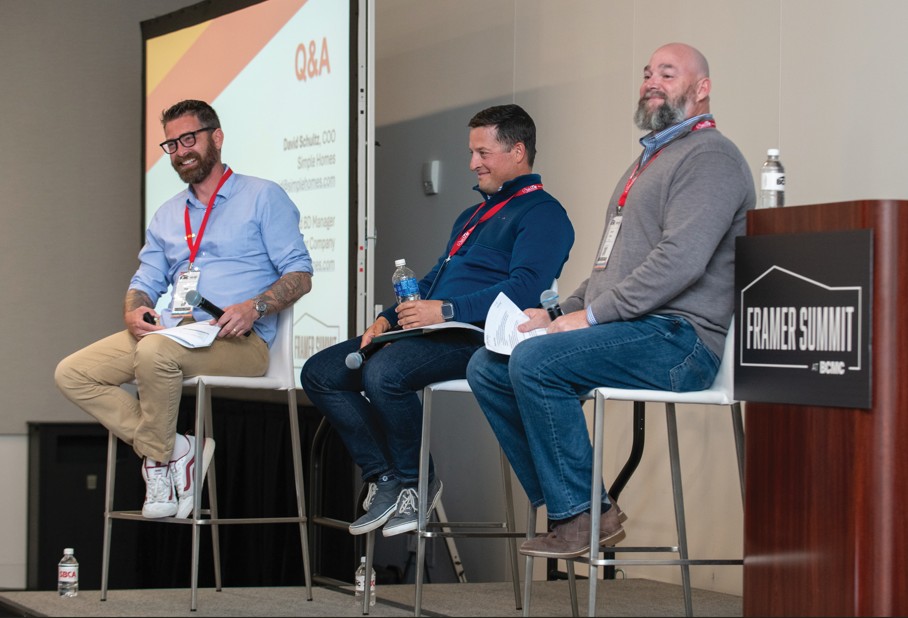Nailing it Together
The Power of Framer and Subcontractor Partnerships
Framer Summit 2024 Education Session: Building Synergy to Strengthen the Framer and Sub Crew Connection
Panelists: David Schultz, Simple Homes, Jacob Knott, JFC Construction Company
Moderator: Chris Tatge, Dynamic Construction
Collaboration, trust, and a shared vision are important factors in strengthening the connection between framers and subcontractors to attain safe, efficient, and successful projects. During the Framer Summit education session, Building Synergy to Strengthen the Framer and Sub Crew Connection, panelists, David Schultz and Jacob Knott, with moderator, Chris Tatge, focused on fostering better collaboration between framers and subcontractor crews, emphasizing the importance of consistent conversations, building long-term relationships, and identifying pathways for improvement for greater labor success. Each of these NFC members primarily focus on larger, multi-family projects, and their advice stems from that perspective.
 There are advantages to using subcontractors and sub crews and there are advantages to using in-house crews. Both provide good labor options for framers depending on what the framer needs for each job. Subcontractors offer flexibility in scaling labor based on the specific needs of a project. Their cost efficiency makes them attractive for framing companies looking to manage project budgets while maintaining labor flexibility. Whereas, in-house crews can provide greater control over quality and process consistency, a more organized structure and process, and alignment with the company’s culture and safety standards.
There are advantages to using subcontractors and sub crews and there are advantages to using in-house crews. Both provide good labor options for framers depending on what the framer needs for each job. Subcontractors offer flexibility in scaling labor based on the specific needs of a project. Their cost efficiency makes them attractive for framing companies looking to manage project budgets while maintaining labor flexibility. Whereas, in-house crews can provide greater control over quality and process consistency, a more organized structure and process, and alignment with the company’s culture and safety standards.
Of course, like with anything else, there are challenges. When using subcontractors, the legalities of each region must be taken into consideration. There are variations in subcontractor hiring which are influenced by local conditions and requirements, such as hourly wage and hour limits and heat tolerance standards, shaping the ways in which subcontractors are engaged.
However, presenters shared strategies for overcoming these challenges and for building stronger partnerships with sub crews. One of the key strategies emphasized was fostering a service-oriented culture that prioritizes mutual support and collaboration. By creating an environment in which both framers and subcontractors feel valued and understood, trust can be built, leading to more successful project outcomes. Setting clear expectations around safety, performance, and project goals is also critical for fostering long-term relationships with subcontractors.
Forming these long-term relationships is important for building synergy amongst these groups. When subcontractors, or an in-house crew, works with a framer for an extended period of time, they become more familiar with the company’s culture, safety protocols, and quality expectations. As such, training subcontractor crews and setting them up for success is essential. For example, Chris shared how he breaks up his company’s production into different crews with specific tasks, such as a production crew, a stair crew, and a deck crew, to make jobs more manageable and skill based. Assigning tasks that individuals do well and enjoy allows crews to operate more efficiently and improve overall productivity.
From lessons learned and strategies shared, framers have the tools to leverage partnerships and key alliances to help them schedule, manage, and maintain a safe and efficient project for their customers through successful collaboration with subcontractors.
